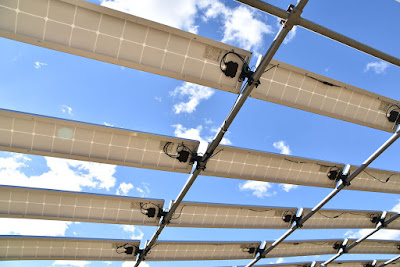Agrivoltaics in Japan has involved a unique selection process for PV modules. Slim PV modules were favored when they were first popularized in 2013. The purpose of this was to ensure that solar radiation would hit crops as evenly as possible and to prevent damage to equipment from strong winds.
Fujidana style solar sharing with slim PV modules
This is limited to the Fujidana style solar sharing design, while the array type design uses larger products from the beginning.
Since around 2017, normal, larger products have gradually come into use, partly due to changes in the market, such as the need to improve business viability as a result of lowered FITs and the withdrawal of manufacturers producing slim types.
Fujidana style solar sharing with large modules
In the future, research is being conducted on the use of double-sided glass solar panels to improve durability and increase solar radiation while also ensuring economic efficiency.





No comments:
Post a Comment
Note: Only a member of this blog may post a comment.